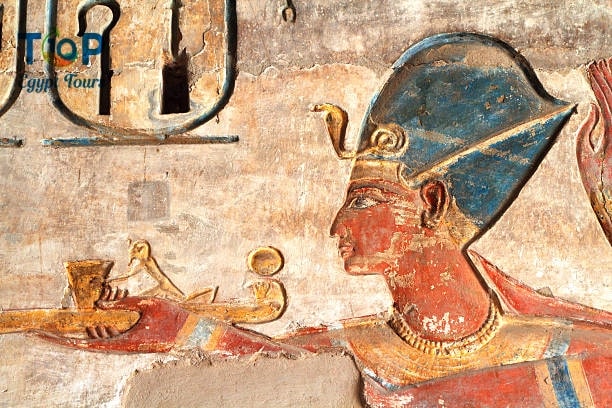King Ramses III, Ancient Egypt, with its rich tapestry of history, is adorned with legendary pharaohs who left an indelible mark on the annals of time. Among these iconic rulers stands Ramses III, a pharaoh whose reign epitomized the grandeur and resilience of ancient Egypt. In this exploration, we delve into the life, achievements, and legacy of King Ramses III.
In this article, we will uncover for you the King Ramses III with Top Ten Egypt.
Early Life and Ascension of King Ramses III
Ramses III, born in the early 12th century BCE, emerged from the royal lineage as the son of Setnakhte and Queen Tiy-Merenese. His early years were steeped in the regal ambiance of the Egyptian court, and destiny beckoned him to ascend the throne as the rightful heir.
Reign and Achievements
A. Duration and Notable Accomplishments
Ramses III’s reign spanned from 1186 BCE to 1155 BCE, marking a period of stability and prosperity for Egypt. His rule witnessed significant achievements in both military and civic domains.
B. Military Campaigns and Victories
Renowned for his prowess on the battlefield, Ramses III successfully defended Egypt against external threats. The Battle of the Delta, a pivotal conflict during his reign, showcased the pharaoh’s military acumen, securing Egypt’s borders and preserving its sovereignty.
C. Architectural and Cultural Contributions
Ramses III was not only a skilled military strategist but also a patron of the arts and architecture. His reign witnessed the construction of magnificent structures, with the grandeur of his mortuary temple at Medinet Habu standing as a testament to his commitment to cultural advancement.
The Battle of the Delta
The Battle of the Delta, a defining moment in Ramses III’s rule, unfolded as Egyptian forces faced the Sea Peoples, a coalition of maritime raiders threatening Egypt’s stability. The pharaoh’s resolute leadership thwarted the invaders, ensuring the continued prosperity of the Nile Valley.
Political and Economic Policies
Ramses III’s governance was marked by astute political decisions and economic policies that bolstered Egypt’s prosperity. His administration focused on maintaining internal stability, fostering trade, and ensuring the welfare of the populace.
The Mortuary Temple of Medinet Habu
A jewel in the architectural crown of Ramses III, the Mortuary Temple of Medinet Habu stands as a lasting tribute to his reign. The temple’s imposing structures and intricate reliefs depict the pharaoh’s divine connection and his efforts to secure a prosperous afterlife.
Legacy and Succession
Ramses III’s legacy reverberates through the corridors of time. His achievements in military and governance set a standard for future pharaohs, influencing the trajectory of Egyptian history. The succession that followed his rule marked a transition, but the echoes of Ramses III’s contributions endured.
Funerary Practices and Afterlife Beliefs
Central to ancient Egyptian society were the beliefs surrounding the afterlife. Ramses III’s funerary practices reflected the profound spirituality of the time, as evidenced by the rituals and burial traditions associated with the pharaoh’s demise.
In conclusion, the reign of King Ramses III stands as a golden chapter in the saga of ancient Egypt. His military triumphs, cultural patronage, and governance prowess cemented his status as a pharaoh who safeguarded Egypt’s glory. As we traverse the remnants of his era, Ramses III beckons us to unravel the mysteries of a civilization that thrived under the watchful eyes of its illustrious rulers.
Browse our complete list of Egypt tours Click Here



Comment (0)